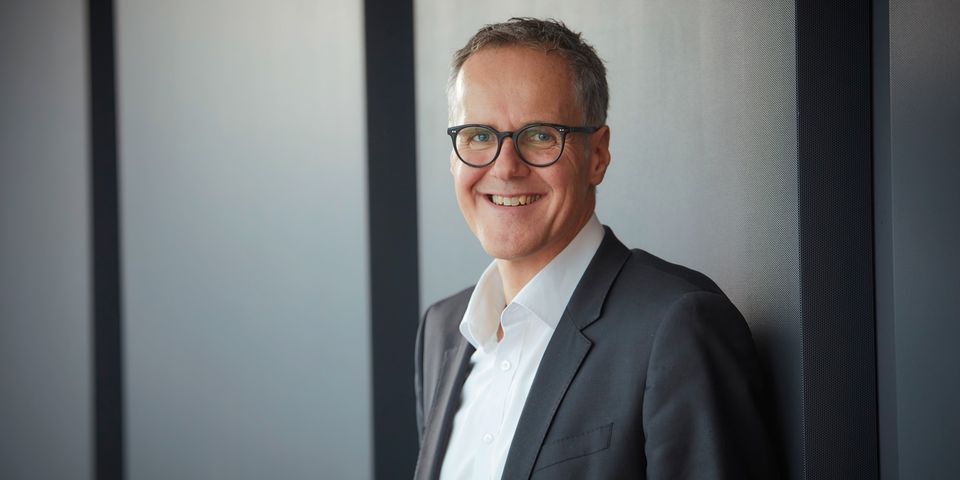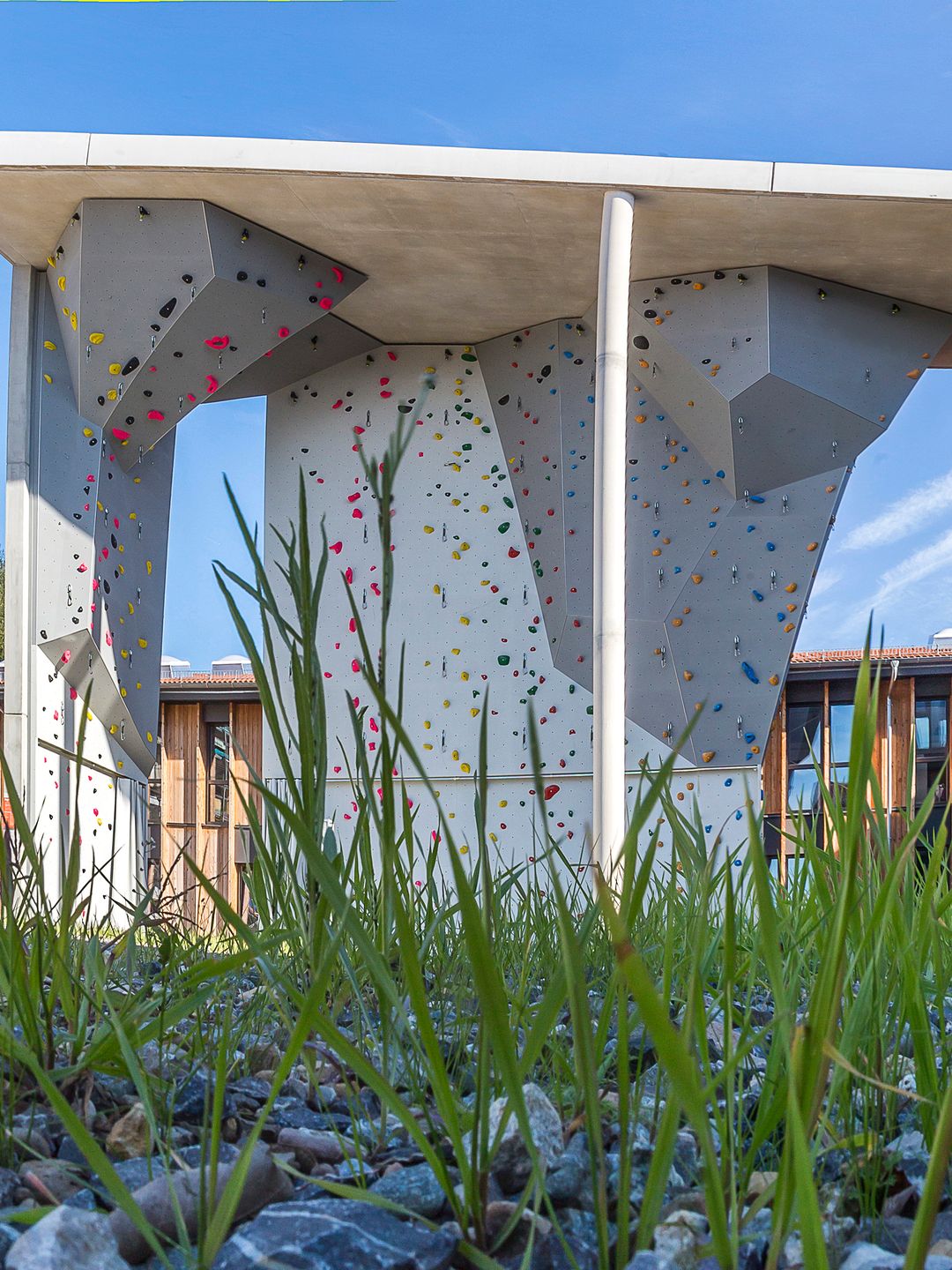Planning and constructing sustainable high-performance buildings - this is what we do, successfully with for years. Several certified passive house buildings, including the largest in Baden-Wurttemberg or North Rhine-Westphalia, are working environments in which people feel comfortable and are active and productive.

Proven Sustainability: (from left) Dietmar van Crüchten, authorized signatory at GfA, Stephan Kleine, managing partner at GfA, Jo. Swodenk, Partner and Managing Director Vollack West and Jörn Böhl, Managing Partner at GfA, with the plaque of the Passive House Institute, which distinguishes the new building as a certified passive house and the sculpture "Win with energy".
Ecological, economic and
socio-cultural.
Building sustainably has many aspects. Conservation of resources is a decisive criterion for an ecologically meaningful investment. This applies to the selection of building technology and building materials. Economic aspects such as operating costs also play an important role. Last but not least, corporatevalues are a compass for applicants when it comes to finding their way on the job market. The focus is on companies that assume responsibility - toward employees, customers, and with regard to the environment and society.

Positioning as an employer brand, a company should also keep an eye on the working environment and create conditions of use in which people enjoy working, are motivated and successful. We say: Buildings always have an effect, every day.
A passive house
is active
Several energy-efficient buildings and certified passive houses underline that Vollack, as an expert in methodical building design, thinks sustainably into the future. Because a passive house is an active contribution to environmental protection. Studies that we have conducted on completed buildings show: Sustainability pays off. Even additional costs for innovative energy concepts pay for themselves in operation after just a few years.
Also revitalization
pays off

Revitalization can also be a forward-looking option - such as for the well-known outdoor brand VAUDE. Vollack developed the master plan for the conversion of the company headquarters. For its sustainable implementation, the VAUDE Campus received the GreenTec Award, among others.
The future of your working world can start today.
Benefit from funds
The new Bundesförderung Energieeffiziente Gebäude (BEG) creates an economic benefit for investing in a green future. It makes investments in energy efficiency and renewable energies particularly attractive for new buildings and renovations. In this way, companies benefit from subsidies, employees from working environments with a pull effect, and the environment from climate protection.
Digital is sustainable
Digital innovations in design and construction create real added value. Vollack successfully uses Building Information Modeling (BIM). In the construction industry, BIM stands for the global trend of digitalization. In this process, all relevant building data is digitally modeled, recorded and combined. Lean Construction (LEAN) aims to increase customer value through continuous improvement and the elimination of wastefulness in processes. The combination of BIM and LEAN ensures a sustainable investment and transparency throughout the life of the building.


Make your building fit for a sustainable future with us.
Learn more about the possibilities of sustainable building and how to save energy and to reduce costs.









